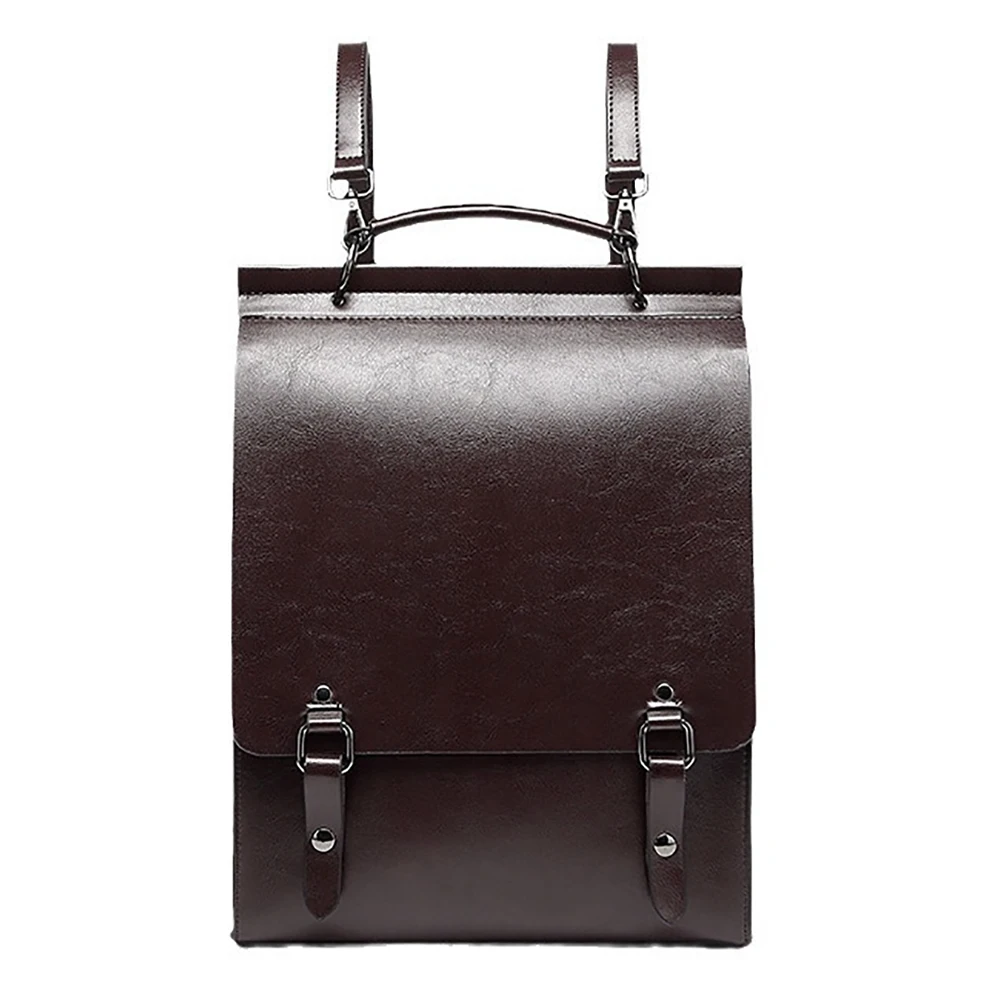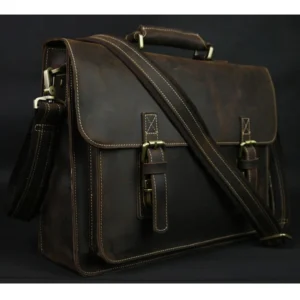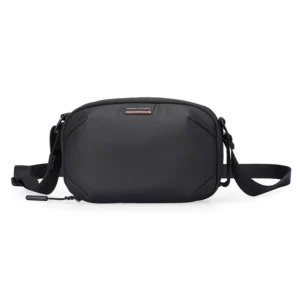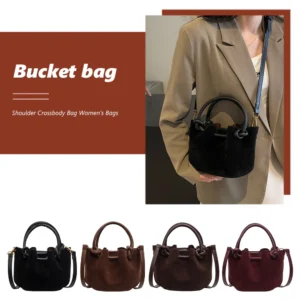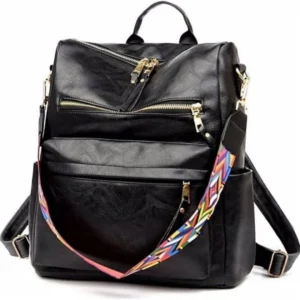Introduction to Convertible Backpacks and Sling Bags
When it comes to carrying your daily essentials, the choice between bag styles can significantly impact your comfort and convenience. Two popular options that offer distinct benefits are convertible backpacks and sling bags.
Convertible backpacks are versatile carriers designed with adaptable straps and features that transform between multiple carrying styles—backpack, briefcase, shoulder bag, or tote—depending on your needs. Sling bags, on the other hand, feature a streamlined single-strap design meant to be worn across the body, offering quick access and mobility.
Both styles have seen a surge in popularity as modern lifestyles demand flexible carrying solutions. People are increasingly looking for bags that adapt to different situations without compromising on style or function.
When deciding between these two options, consider:
- Your typical daily load (minimal essentials vs. laptop and gear)
- How you’ll be moving throughout the day (active vs. stationary)
- The environments you’ll navigate (professional settings vs. casual outings)
- Your access needs (frequent retrieval vs. occasional)
Throughout this comparison, we’ll analyze how each bag type performs across various scenarios to help you determine which aligns best with your lifestyle needs. Proper leather conditioning and waterproofing is essential for maintaining both types of bags, especially if you invest in quality leather options like those offered in our convertible leather backpack collection.
Understanding Convertible Backpacks: Versatility in Design
Convertible backpacks represent the chameleons of the bag world, designed specifically to adapt to changing environments and needs. These innovative carriers feature transformative designs that allow them to shift between multiple carrying modes—typically backpack, briefcase, shoulder bag, and sometimes tote configurations—through clever strap systems and modular components.
What sets convertible backpacks apart is their adaptability. Most designs include straps that can be tucked away, repositioned, or completely removed to change the bag’s carrying style. This versatility makes them particularly valuable for professionals who move between casual and formal settings throughout their day.
Capacity-wise, convertible backpacks typically offer between 15-25 liters (915-1525 cubic inches) of storage, comfortably accommodating:
– Laptops up to 15-17 inches
– Tablets or e-readers
– Documents and folders
– Daily essentials (water bottle, umbrella, etc.)
– Small accessories and tech peripherals
Premium convertible backpacks often feature full-grain leather construction, water-resistant materials, and durable hardware designed to withstand the rigors of daily transformation. The thoughtful design balances professional aesthetics with practical functionality, making them suitable for business environments and casual settings alike.
The transformative benefits of convertible leather backpacks extend beyond mere convenience, offering true versatility for dynamic lifestyles. For those specifically interested in professional options, our briefcase-backpack hybrids combine boardroom elegance with commuter practicality.
Key Features of Convertible Backpacks
Convertible backpacks distinguish themselves through thoughtfully engineered features that enable their multi-functional nature:
Adjustable and Concealable Strap Systems: Padded backpack straps that tuck away when not needed, convertible to shoulder straps or removed entirely
Transitional Hardware: High-quality buckles, clips, and connectors that facilitate easy transformation between carrying modes without compromising structural integrity
Multiple Carrying Configurations: Dedicated handles and attachment points that support various carrying styles, from backpack to briefcase to shoulder bag
Device Protection: Padded laptop compartments with suspended design to protect electronics from impacts when setting the bag down
Business Organization: Structured interior with document sleeves, pen holders, card slots, and zippered security pockets to maintain professional organization
Weather-Resistant Construction: Premium materials and sealed seams to protect contents from light rain and environmental conditions
Smart Access Design: Strategic zipper placement allowing access to different compartments depending on how the bag is being carried
The complexity of these systems requires quality craftsmanship to ensure smooth transitions between modes. Premium convertible backpacks feature robust stitching at stress points and reinforced connection points where straps attach.
Understanding proper maintenance is crucial for preserving the transformative features of these bags. The ultimate guide to conditioning your leather backpack provides essential information for keeping the hardware functioning smoothly and the leather supple for years of reliable transformations.
Advantages of Convertible Backpacks
Convertible backpacks offer numerous benefits that make them attractive for busy, adaptable lifestyles:
Versatility Across Environments: Seamlessly transition from casual to professional settings without changing bags, adapting to different dress codes and situations
Adaptive Carrying Comfort: Switch to backpack mode when carrying heavier loads for better weight distribution, then convert to briefcase or shoulder bag for professional meetings
Superior Weight Distribution: When worn as a backpack, these bags distribute weight evenly across both shoulders, comfortably handling loads up to 15-20 pounds (7-9 kg)
Professional Appearance On Demand: Transform from practical commuter bag to polished briefcase or tote upon arrival at the office or business meetings
Value Proposition: Essentially multiple bags in one, offering significant cost savings compared to purchasing several specialized bags
Long-Term Investment: Quality convertible designs typically feature durable construction and timeless aesthetics that resist fashion cycles
Simplified Travel: One bag can serve multiple purposes during business trips, reducing the need for additional luggage
The adaptability of convertible backpacks proves particularly valuable for professionals with variable daily schedules, such as those who commute in casual clothes but work in professional environments, or who move between different settings throughout their day.
For commuters who rely on these versatile bags daily, our leather maintenance guide for commuters provides specialized care tips to keep your convertible backpack looking professional despite daily wear and tear.
Limitations of Convertible Backpacks
Despite their versatility, convertible backpacks do come with certain drawbacks worth considering:
Weight and Bulk: The additional hardware and reinforcement needed for conversion mechanisms typically make these bags heavier than single-purpose alternatives, usually weighing between 2-4 pounds (0.9-1.8 kg) when empty
Complexity in Design: The very features that enable versatility can create complexity, with multiple straps, buckles, and compartments to manage
Learning Curve: New users often need time to master efficient transitions between carrying modes, with some conversions taking 30-60 seconds to complete properly
Design Compromises: Multi-purpose design means each carrying mode may not be as optimized as a dedicated single-purpose bag
Price Premium: The sophisticated design and additional components typically result in higher prices compared to single-function alternatives
Potential Durability Concerns: More moving parts and conversion points create additional potential failure points over time
Aesthetic Compromises: Some convertible designs struggle to fully conceal their multi-purpose nature, potentially compromising sleekness in certain configurations
These limitations don’t necessarily diminish the value of convertible backpacks but represent the inevitable trade-offs that come with versatility. Understanding these drawbacks helps set realistic expectations about how these bags will perform in daily use.
Ideal Use Cases for Convertible Backpacks
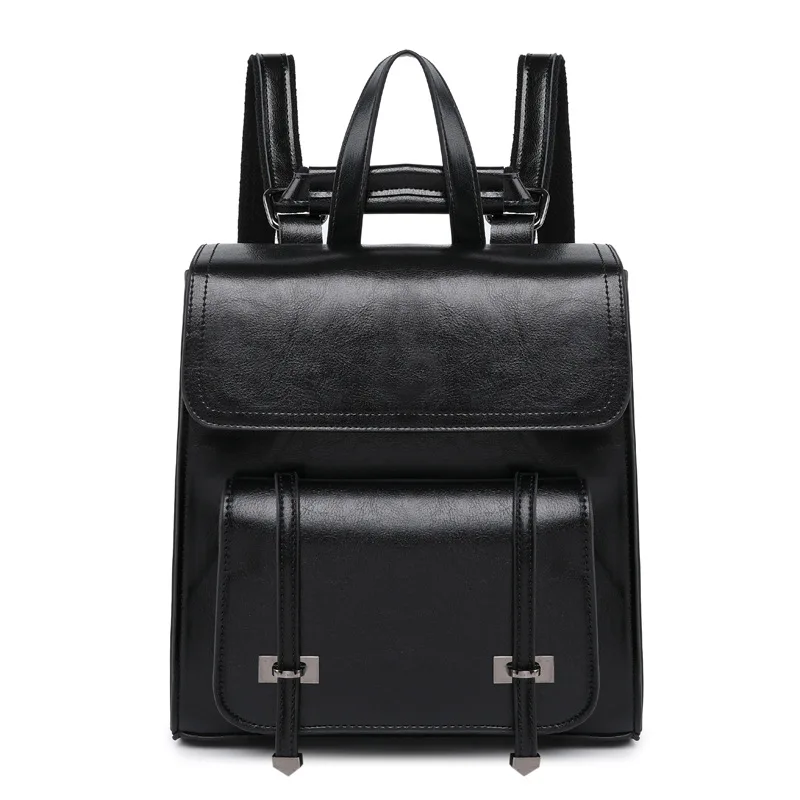
Business Travel and Conferences
Convertible backpacks excel during business travel, where you might need to carry your laptop and documents comfortably through airports as a backpack, then quickly transform the bag into a professional briefcase for meetings. The ability to adapt to different professional settings without changing bags makes them particularly valuable for conference attendees who alternate between formal presentations and casual networking events.
Professional Commuting
For those who bike or walk to work but need a professional-looking bag in the office, convertible designs offer the perfect solution. Commute in backpack mode for comfort and balance, then switch to briefcase or tote configuration upon arrival for a polished office appearance.
Day-to-Night Transitions
Professionals who head to social events directly from work benefit from a bag that adapts to evening settings. A convertible backpack can shift from practical daytime carrier to a more stylish shoulder bag or tote for evening engagements without needing to transfer contents to a different bag.
Mixed-Use Days
On days that combine work, gym, errands, and social activities, convertible backpacks provide the flexibility to adapt to each situation. Their typically generous capacity accommodates the various items needed throughout a diverse day while adjusting their carrying style to match each environment.
Modern Professional Environments
As workplaces become more casual and professionals increasingly work from various locations (coffee shops, co-working spaces, client sites), convertible backpacks bridge the gap between casual functionality and professional presentation.
For practical advice on making the most of these versatile bags, our guide on how to wear a convertible backpack purse offers style tips and transition techniques for different settings.
Understanding Sling Bags: The Essence of Mobility
Sling bags represent the minimalist approach to carrying essentials, featuring a distinctive single-strap design meant to be worn across the body (crossbody) or over one shoulder. This streamlined bag style prioritizes accessibility and mobility over maximum capacity.
Evolving from traditional messenger bags, modern sling bags have been refined to be more compact and body-conforming. Their defining characteristic is the single adjustable strap that crosses the body diagonally, allowing the bag to rest against your back or be rotated to your front for quick access.
Typically, sling bags offer modest capacity ranging from 2-10 liters (122-610 cubic inches), accommodating:
– Smartphone
– Wallet and keys
– Small tablet (in larger models)
– Minimal daily essentials
– Compact camera
– Small water bottle
This limited capacity is by design—sling bags are meant for carrying only what’s necessary, encouraging a minimalist approach to daily carry. They excel in situations where mobility and quick access take precedence over carrying capacity.
The materials used in quality sling bags emphasize lightness and durability, with premium options featuring full-grain leather, high-performance technical fabrics, or weather-resistant materials. Hardware is typically minimized to reduce weight and bulk while maintaining functionality.
Our leather sling backpacks collection showcases the perfect balance between traditional craftsmanship and modern mobility needs.
Key Features of Sling Bags
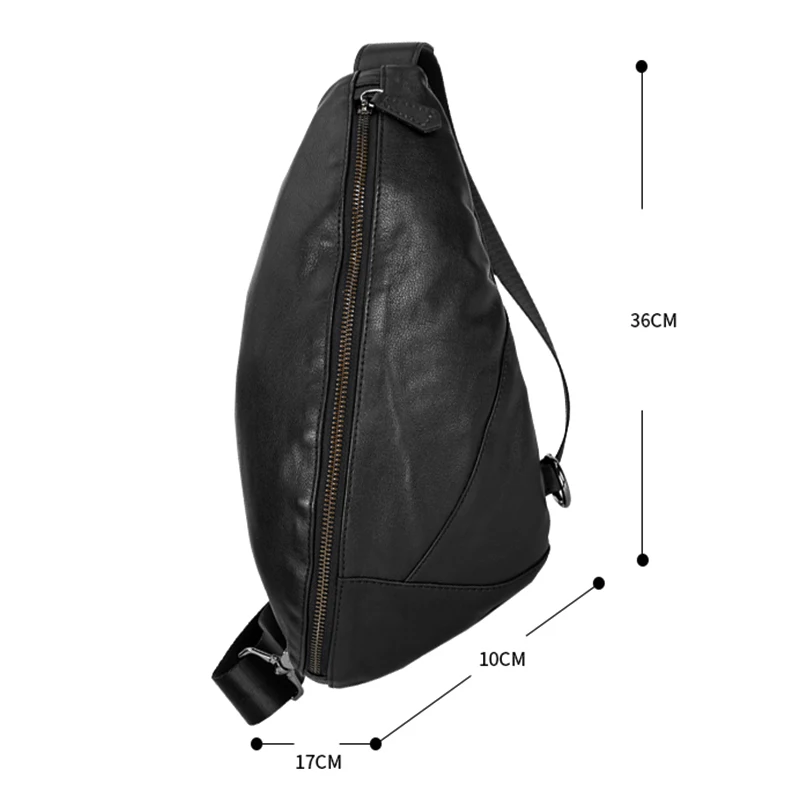
Sling bags incorporate specific design elements that enhance their functionality for quick-access, on-the-go scenarios:
Ergonomic Single-Strap System: Contoured, padded strap designed to distribute weight comfortably across one shoulder and the opposite hip
Body-Conforming Shape: Curved or angled design that hugs the back or chest when worn, minimizing bouncing during movement
Quick-Access Compartments: Front-facing pockets and strategically placed zippers allow retrieval of items without removing the bag
Ambidextrous Wear Options: Many designs can be worn over either shoulder or switched between left and right sides for comfort
Rotation Capability: The ability to easily swing the bag from back to front for access without removal
Anti-Theft Features: Body-facing pockets and hidden compartments that remain secure against the wearer when in crowded areas
Stabilizing Straps: Secondary straps on some models that prevent the bag from shifting during active movement
Minimal Contact Surface: Reduced back panel size minimizes heat build-up during extended wear in warm conditions
The internal organization of sling bags typically features simplified compartmentalization with a main chamber and several smaller pockets for organized storage of essentials. Premium designs often include RFID-blocking pockets, water-resistant exterior pockets for quick access, and dedicated smartphone sleeves.
Our crossbody leather sling backpack options showcase these features with the added benefit of premium materials and craftsmanship.
Advantages of Sling Bags
Sling bags offer distinct benefits that make them ideal for certain situations and lifestyles:
Superior Accessibility: Rotate the bag from back to front in seconds for immediate access to contents without removing the bag
Urban Mobility: Streamlined profile allows easy navigation through crowded spaces, public transit, or busy streets
Security Advantages: Can be worn in front of the body in crowded or high-risk areas, keeping valuables within sight and reach
Minimal Weight: Typically under 1 pound (0.45 kg) when empty, reducing carrying fatigue during extended wear
Freedom of Movement: Compact design doesn’t restrict arm movement or body rotation, ideal for active environments
Quick On/Off Capability: Single strap design allows for rapid donning and removal compared to two-strap backpacks
Modern Aesthetic: Contemporary, streamlined appearance that complements casual and athletic attire
Complementary Function: Works well as a secondary bag when traveling with larger luggage for keeping essentials accessible
These advantages make sling bags particularly popular among urban commuters, travelers, and those who prioritize efficiency and mobility in their daily activities. The minimalist approach encourages carrying only what’s necessary, reducing physical burden and simplifying daily organization.
For those who appreciate maximum mobility with minimum bulk, our small leather sling backpack collection offers compact options without sacrificing quality or function.
Limitations of Sling Bags
Despite their advantages, sling bags come with inherent limitations that may impact their suitability for certain users or situations:
Capacity Constraints: Limited volume (typically 2-10 liters/122-610 cubic inches) restricts what can be carried, often insufficient for laptops larger than 13 inches or multiple textbooks
Uneven Weight Distribution: Single-shoulder carry design places asymmetric load on the body, potentially causing discomfort with weights above 5-7 pounds (2.3-3.2 kg)
Limited Professional Appearance: Many sling designs have a casual or athletic aesthetic that may not align with formal business environments
Shoulder Fatigue: Extended wear, especially with heavier loads, can cause shoulder and neck strain due to the single-point weight bearing
Reduced Protection: Typically less padding and structure than backpacks, offering minimal impact protection for electronics
Weather Vulnerability: Smaller profile often means less weather protection for contents during inclement conditions
Size Limitations: Items like full-size laptops, larger cameras, or bulky equipment simply won’t fit in most sling bags
These limitations don’t diminish the value of sling bags for their intended use cases but highlight the importance of matching your bag choice to your specific carrying needs and environments.
For those concerned about weather protection, our complete guide to waterproofing leather bags offers practical solutions for enhancing your sling bag’s resistance to the elements.
Ideal Use Cases for Sling Bags
Urban Exploration and Sightseeing
Sling bags shine during city exploration and tourism, where their quick-access design allows for easy retrieval of essentials like maps, phones, or cameras without stopping. Their compact profile also reduces the risk of bumping into others in crowded tourist attractions while keeping valuables secure against the body.
Quick Errands and Essential-Only Trips
For grocery runs, coffee shop visits, or brief shopping excursions where you only need a wallet, phone, and keys, the minimalist design of sling bags provides just enough space without unnecessary bulk. The quick on/off nature makes them perfect for short trips where you’re frequently entering and exiting locations.
Active Pursuits with Minimal Gear
Hiking, casual biking, or walking when minimal supplies are needed benefits from the unobtrusive profile of sling bags. The ability to quickly rotate the bag to access water, snacks, or small first aid supplies without removing it makes sling bags ideal companions for light recreational activities.
Crowded Environments
Concerts, festivals, amusement parks, and public transit are perfect settings for sling bags. Their front-wear option keeps valuables visible and accessible in crowded spaces where security is a concern, while their compact size won’t impede movement in tight quarters.
Secondary/Companion Bag for Travel
When traveling with larger luggage, a sling bag serves as the perfect day bag for carrying essentials while sightseeing or as an easily accessible carry-on for items needed during the journey (documents, entertainment, snacks). This dual-bag approach keeps valuables close while bulkier items remain in main luggage.
Our men’s leather sling backpack collection offers stylish options perfectly suited for these scenarios.
Comprehensive Comparison: Convertible Backpacks vs Sling Bags

| Feature | Convertible Backpacks | Sling Bags |
|---|---|---|
| Carrying Style | Multiple: backpack, briefcase, shoulder bag, tote | Single: crossbody/sling |
| Capacity | 15-25 liters (915-1525 cubic inches) | 2-10 liters (122-610 cubic inches) |
| Device Accommodation | Laptops up to 17”, tablets, documents | Small tablets, smartphones, minimal essentials |
| Weight (Empty) | 2-4 pounds (0.9-1.8 kg) | Under 1 pound (0.45 kg) |
| Comfort for Extended Wear | ★★★★☆ (as backpack) ★★★☆☆ (other modes) | ★★★☆☆ (light loads) ★★☆☆☆ (heavy loads) |
| Professional Appearance | ★★★★★ (in briefcase/tote mode) | ★★☆☆☆ (generally casual) |
| Accessibility While Wearing | ★★☆☆☆ (backpack mode) ★★★☆☆ (other modes) | ★★★★★ (rotates for access) |
| Weather Protection | ★★★★☆ | ★★★☆☆ |
| Typical Price Range | $100-300+ | $50-150+ |
This comparison highlights how each bag type excels in different areas, with convertible backpacks offering versatility and capacity while sling bags prioritize accessibility and mobility. The right choice depends on which attributes align most closely with your daily needs and lifestyle.
For more insights into how these bags fit into urban living patterns, explore our article on convertible backpacks for urban lifestyles.
Capacity and Organization: Finding Your Storage Sweet Spot
The most significant difference between convertible backpacks and sling bags lies in their carrying capacity and organizational approach. This distinction fundamentally shapes what role each bag can play in your daily life.
Convertible backpacks typically offer organized compartmentalization with dedicated spaces for specific items. A standard convertible backpack might include:
– Padded laptop sleeve (fitting devices up to 15-17 inches)
– Tablet pocket
– Document section
– Accessory organizer with pen slots and card pockets
– Water bottle holders
– Multiple internal dividers
This structured organization makes convertible backpacks ideal for professionals who carry a diverse array of items daily—from technology to documents to personal essentials—and need to keep them neatly arranged for easy access.
In contrast, sling bags embrace a more minimalist approach with simpler organization:
– Main compartment for larger items
– Front quick-access pocket
– Hidden security pocket against the back
– Limited internal dividers
This streamlined design works perfectly for carrying everyday essentials like a phone, wallet, keys, sunglasses, and perhaps a small tablet or e-reader, but struggles to accommodate larger devices or multiple categories of items.
The choice between these organizational philosophies often comes down to your daily inventory needs—do you regularly carry a laptop and numerous accessories, or do you prefer traveling light with just the essentials? Our women’s leather sling backpack collection offers various organizational layouts for different needs.
Comfort and Ergonomics: How Each Feels During Extended Use
The carrying experience differs substantially between convertible backpacks and sling bags, especially during extended wear periods.
Convertible backpacks, when worn in backpack mode, distribute weight evenly across both shoulders and the upper back. This balanced weight distribution makes them significantly more comfortable for carrying heavier loads (10-20 pounds/4.5-9 kg) over longer periods. The dual-strap design prevents the one-sided strain that can lead to shoulder and neck discomfort.
However, when converted to briefcase or shoulder bag modes, convertible backpacks lose this ergonomic advantage, placing the entire load on one side of the body. This makes their comfort level in these alternate configurations more comparable to traditional single-strap bags.
Sling bags, with their single-strap crossbody design, place the entire load on one shoulder. For light loads (under 5 pounds/2.3 kg), this can remain comfortable for several hours. The body-conforming design and ability to switch shoulders can help extend comfort periods. However, as weight increases, the asymmetrical load distribution becomes increasingly noticeable, potentially causing shoulder, neck, or back strain with extended use.
Body type and fit also significantly impact comfort. Sling bags may not fit all body types equally well, while convertible backpacks typically offer more adjustment options to accommodate different physiques. For guidance on finding your perfect fit, our resource on how to measure and fit a backpack for ultimate comfort provides valuable insights.
Security and Accessibility: Protection vs Convenience
Security and accessibility represent another key tradeoff between these bag styles, with each offering distinct advantages.
Sling bags excel in accessibility, allowing wearers to rotate the bag from back to front without removal. This quick-access design enables retrieval of items in seconds—ideal for grabbing a phone, transit pass, or wallet on the go. Additionally, sling bags can be worn in front of the body in high-risk areas, keeping valuables within sight and providing a significant security advantage in crowded environments.
Convertible backpacks, particularly in backpack mode, offer less on-the-go accessibility. Accessing items typically requires removing the bag or asking someone else to retrieve things from back compartments. However, they generally feature more robust security features, including:
– Hidden back panel pockets for valuables
– Lockable zippers on main compartments
– RFID-blocking pockets in premium models
– More substantial construction that’s harder to slash or cut
The security-accessibility balance varies with wearing configuration. In briefcase or shoulder bag mode, convertible backpacks offer improved accessibility compared to backpack mode, though still not matching the quick-rotation advantage of sling bags.
For urban environments where both security and quick access matter, the choice often comes down to which you prioritize more: the ability to quickly access essentials without removing your bag (sling) or the capacity to securely carry more valuable items like laptops and tablets (convertible backpack).
Versatility and Adaptability: Meeting Changing Needs
Adaptability to different environments and situations represents a critical consideration when choosing between bag styles.
Convertible backpacks are designed specifically for versatility across varied settings. A quality convertible design allows you to:
– Wear it as a backpack during commutes for comfort
– Convert to a professional briefcase or tote for client meetings
– Switch to a shoulder bag for casual social settings
– Adjust capacity through expansion features when needed
This adaptability makes convertible backpacks particularly valuable for individuals with diverse daily activities—perhaps starting with a morning commute, followed by professional meetings, a workout session, and evening socializing. The ability to transform between carrying modes means the bag can appropriately match each environment without needing to transfer contents.
Sling bags offer a different kind of versatility—one centered on mobility and accessibility rather than appearance transformation. Their adaptability comes from:
– Ability to be worn on either shoulder to prevent fatigue
– Quick rotation from back to front without removal
– Compact profile that works in various casual environments
– Easy integration with other bags during travel
Weather adaptability also differs significantly. Convertible backpacks typically offer more comprehensive weather protection due to their larger size and often include features like water-resistant materials and rain covers. Sling bags, with their smaller profile, generally provide less protection from the elements.
For guidance on finding the perfect fit for either style, our article on measuring for backpack ultimate comfort offers valuable insights.
Style and Professionalism: Image and Impressions
The aesthetic impact of your bag choice significantly influences how you’re perceived in different environments.
Convertible backpacks, particularly premium leather models, project versatile professionalism. In briefcase or tote mode, they present a polished appearance suitable for formal business settings, client meetings, and professional events. When configured as a backpack, they maintain a smart-casual look appropriate for modern offices and creative workplaces. This style flexibility makes them particularly valuable for professionals who navigate between traditional and casual business environments.
Sling bags generally convey a more casual, contemporary aesthetic. Their streamlined, urban-inspired design complements casual and smart-casual attire but may appear too informal for traditional business environments. The crossbody style projects a practical, on-the-go image that aligns well with active lifestyles and creative professions.
Material choice significantly impacts the style perception of both bag types:
– Full-grain leather elevates the appearance, adding sophistication and timelessness
– Technical fabrics project modernity and practicality
– Canvas creates a more casual, relaxed impression
When matching bags to attire, convertible backpacks in briefcase mode pair naturally with business formal and business casual clothing, while sling bags complement casual, athleisure, and street-style outfits more effectively.
When to Choose a Convertible Backpack: Decision Criteria
A convertible backpack is likely the right choice when:
Your day involves varied environments – Moving between casual and formal settings where bag appearance matters
You regularly carry technology – Laptops, tablets, and accessories require the padded protection and organized compartments convertible backpacks offer
Your load fluctuates throughout the week – Some days require carrying more items than others, benefiting from the expanded capacity
Professional appearance matters – Your work environment or client interactions demand a more polished, business-appropriate bag
You need balanced weight distribution – Back issues or regular carrying of heavier loads make proper weight distribution important
You value versatility over specialization – The ability to adapt your bag to different scenarios outweighs having the perfect bag for one specific use
You prefer investing in fewer, higher-quality items – The multi-functionality justifies a higher price point for premium construction
A convertible backpack makes particular sense for professionals who combine commuting with client meetings, business travelers who need one bag to serve multiple functions, and those who move between casual and formal environments regularly throughout their week.
When to Choose a Sling Bag: Decision Criteria
A sling bag is likely the right choice when:
Quick access is paramount – You frequently need to retrieve items while on the move without removing your bag
You carry minimal essentials – Your daily carry consists primarily of a phone, wallet, keys, and perhaps a few small personal items
Mobility and freedom of movement are priorities – Your lifestyle involves active movement through crowded spaces or physical activities
You frequently navigate crowded environments – Public transit, tourist areas, or busy urban settings where a compact profile is advantageous
Security in busy places concerns you – The ability to wear the bag in front of your body provides peace of mind in high-risk areas
You prefer traveling light – A minimalist approach to daily carry aligns with your lifestyle philosophy
You need a secondary bag for specific activities – A complementary bag to your primary work bag for evenings out or weekend activities
Sling bags are particularly well-suited for urban explorers, minimalists who intentionally carry less, active individuals who need essentials during light activities, and travelers who want a secure day bag while sightseeing in unfamiliar locations.
Hybrid Options: Convertible Sling Backpacks
For those finding it difficult to choose between the two styles, the market now offers innovative hybrid designs that bridge the gap between convertible backpacks and sling bags. These hybrid options attempt to capture benefits from both categories.
Convertible sling backpacks typically feature:
– A compact profile similar to traditional sling bags
– The ability to convert between sling (crossbody) and small backpack configurations
– Slightly increased capacity compared to standard sling bags (typically 8-12 liters/488-732 cubic inches)
– Enhanced organization while maintaining quick-access features
These hybrids excel in situations where a standard sling bag might be slightly too small, but a full convertible backpack would be excessive. They’re particularly useful for day trips, casual outings where you need more than just essentials, or situations where you might switch between active movement and stationary periods.
The compromises in these hybrid designs typically involve:
– Less carrying capacity than full-sized convertible backpacks
– Fewer transformation options than true convertible designs
– Slightly more bulk than dedicated sling bags
– Less ergonomic back support than proper backpacks
While not replacing either category entirely, these hybrids offer a middle-ground solution for those whose needs fall between the two bag types or who want elements of both styles in a single product.
Making Your Decision: Personal Assessment Guide
To determine which bag style best suits your needs, consider the following assessment questions:
Daily Carry Inventory:
– What items do you carry every day without exception?
– Do you regularly need to transport a laptop or tablet?
– How many distinct categories of items do you carry (tech, documents, personal care, etc.)?
– Do your carrying needs change significantly day-to-day?
Activity Profile:
– How do you primarily commute or move throughout your day?
– Do you frequently navigate crowded spaces?
– How often do you need quick access to items while on the move?
– Do you engage in physical activities where bag stability matters?
Professional Environment:
– What’s the dress code in your primary work environment?
– Do you attend formal meetings or client presentations?
– How important is professional appearance in your field?
– Do you transition between casual and formal settings in a typical day?
Comfort Priorities:
– How long do you typically wear your bag continuously?
– Do you have any existing shoulder, back, or neck issues?
– What’s the maximum weight you regularly need to carry?
– Do you prefer balanced weight distribution or minimal bulk?
Style Preferences:
– Is your personal style more formal, casual, or variable?
– Do you prefer contemporary or classic aesthetics?
– How important is the bag’s appearance in your overall look?
– Do you need a bag that complements multiple outfits or specific ones?
By honestly answering these questions, you’ll likely find your needs aligning more clearly with either convertible backpacks or sling bags. Remember that the “right” choice is the one that best serves your specific lifestyle requirements rather than following general trends.
The Complementary Approach: Why You Might Need Both
Rather than viewing convertible backpacks and sling bags as competing options, consider how they might work together as complementary pieces in your bag collection. Many people find that owning both types serves their diverse needs more effectively than trying to find one perfect solution.
A strategic dual-bag approach might look like:
– Using a convertible backpack for work days, business travel, or situations requiring larger capacity and professional appearance
– Employing a sling bag for weekends, quick errands, casual outings, or as a security-focused day bag while traveling
This complementary strategy allows each bag to do what it does best without forcing either to serve in situations where it’s not ideal. The convertible backpack handles your technology-heavy, professional needs, while the sling bag manages your mobile, minimal-carry scenarios.
For travelers, this pairing is particularly effective—use the convertible backpack as your main travel bag for flights and transportation, then switch to the sling bag for daily exploration at your destination, potentially even packing the empty sling inside the convertible for the journey.
While investing in two quality bags represents a higher initial cost, the extended lifespan of bags used appropriately for their intended purposes often provides better long-term value than a single compromise solution.
Brown Leather Sling Backpack, Crossbody Leather Sling Backpack, Men's Leather Sling Backpack
Price range: $191.96 through $193.72 Select options This product has multiple variants. The options may be chosen on the product pageDesigner Mini Backpack, Mini Leather Backpack, Small Leather Sling Backpack, Women's Leather Backpack
Price range: $95.76 through $98.80 Select options This product has multiple variants. The options may be chosen on the product page15 Inch Leather Laptop Backpack, Leather Briefcase Backpack
$332.96 Select options This product has multiple variants. The options may be chosen on the product pageBlack Leather Sling Backpack, Crossbody Leather Sling Backpack, Small Leather Sling Backpack
Price range: $103.88 through $104.08 Select options This product has multiple variants. The options may be chosen on the product pageSmall Leather Sling Backpack, Women's Leather Sling Backpack
Price range: $70.76 through $80.20 Select options This product has multiple variants. The options may be chosen on the product pageConvertible Leather Backpack, Women's Leather Backpack
$105.12 Select options This product has multiple variants. The options may be chosen on the product page
At Summit Carry, we understand that your bag choice reflects both your practical needs and personal style. Whether you choose a versatile convertible backpack, a nimble sling bag, or both to complement each other, investing in quality materials and thoughtful design ensures your carrying solution will serve you reliably for years to come.
Your lifestyle, daily activities, and personal preferences should guide your decision—there’s no universally “better” option, only the right choice for your unique needs. By carefully assessing your typical carrying requirements and the environments you navigate daily, you’ll find the perfect balance between versatility, capacity, accessibility, and style.

